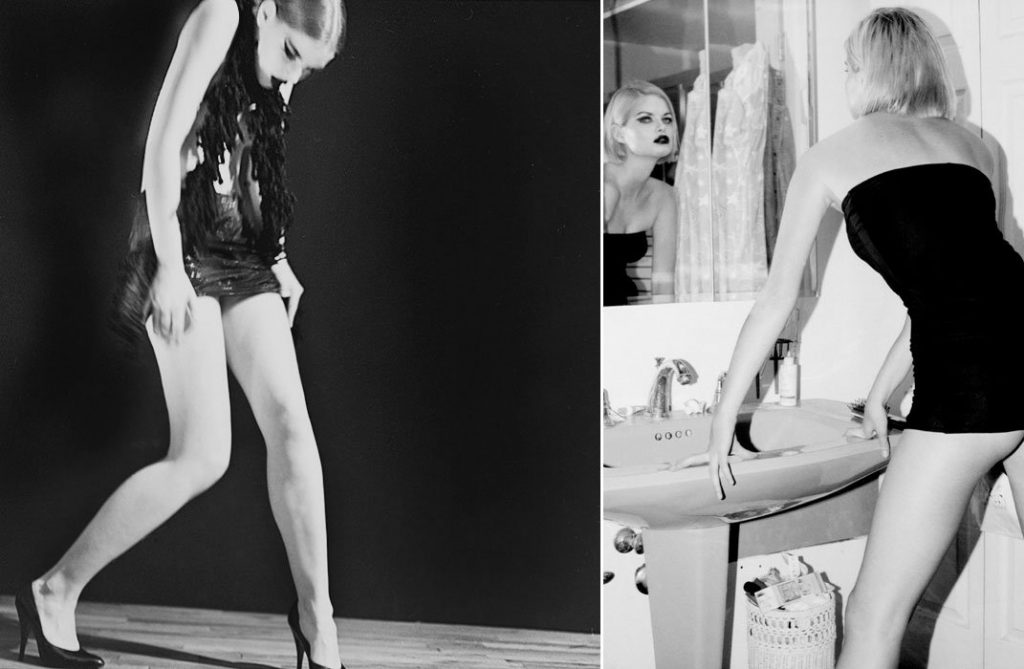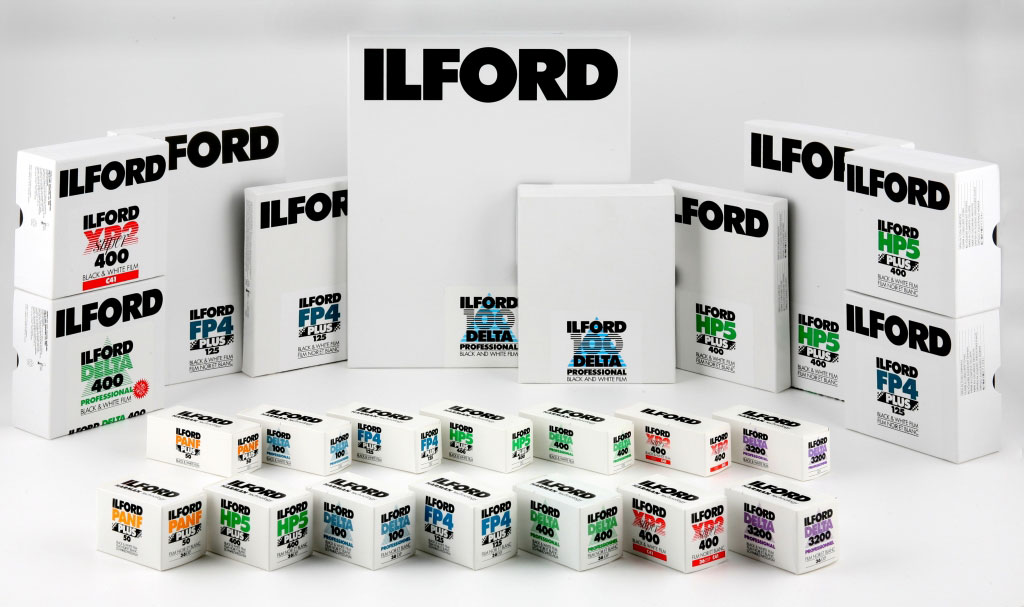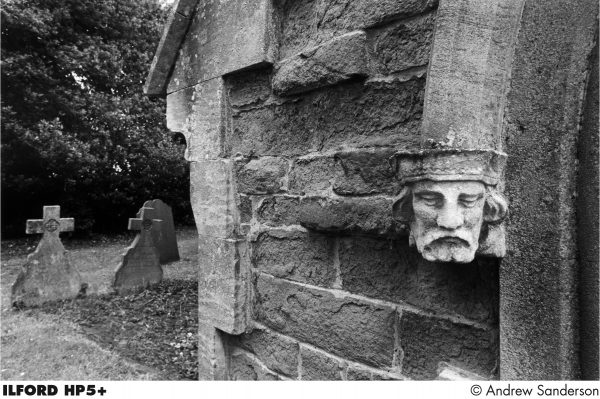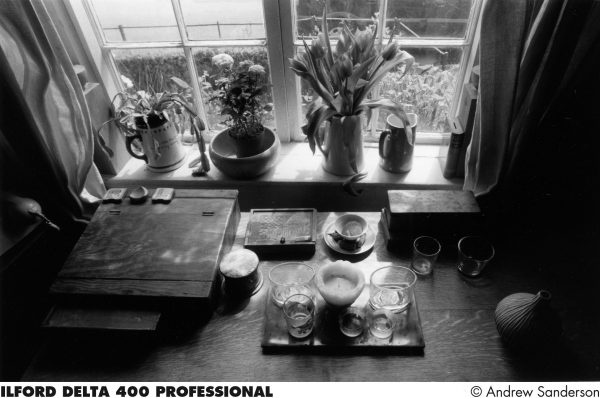What I love about Ilford Films is they’ve always stood by the film community through thick and thin. Unlike some others, who’ll remain anonymous. This is an article I gleaned from them and thought it important to share. I’m not a hater of Tri-X. In fact, most of my B+W images are Tri-X shot @ 320ISO. But during those bad Kodak years, I became despondent,…and Ilford saved me. Sorta. So, I’m not here to disparage Tri-X. While it has a bit more contrast than HP5+, since I lower the contrast of Tri-X by shooting at 320, it’s probably a wash. Since I still work in the darkroom, (again, thank you Ilford), I tend to control my contrast there anyway.
The Ilford Films
HP5 PLUS
- Uses our more traditional emulsion making methods.
- HP5+ has evolved over many years to become an extremely flexible and robust film.
- Has extremely good exposure latitude and is very tolerant of under/over exposure.
- Images have a excellent sharpness and with a traditional look and feel.
- Flexible choice of developers, robust to over/under development.
- Good push characteristics EI 400 – 3200
DELTA 400 PROFESSIONAL
- More contemporary emulsion design.
- Uses ILFORD Photo proprietary controlled Core-Shell™ crystal growth technology. (Not the same as Kodak T-Grain)
- Core shell crystals have carefully tailored sensitometric properties to ensure maximum details captured in highlight and shadows.
- More uniform grain structure with finer grain compared to HP5. Grain size is closer to medium speed film like FP4+
- Images have exceptional sharpness and a “cleaner” look.
- Choice of developer is more important and processing needs to be more precise than HP5+
- Longer fixing times than HP5+
- Correct exposure more important than HP5+ (Less latitude for exposure errors and processing accuracy)
- Good Push/Pull characteristics EI 200 – 3200
- Negatives are easy to print. When exposed and processed correctly, negatives have good tonal range and are slightly easier to print than conventional films.
ILFORD PHOTO offers the biggest and broadest range of black & white films on the market today. While this is perfect for experienced film photographers who love having a choice, they appreciate that it can be a bit confusing for people new to film photography.
The Ilford site is a great resource, so if you are looking to try film photography for the first time and are wondering where to start, then https://www.ilfordphoto.com/ is a good starting place.
However, there is no ‘wrong’ choice when it comes for ILFORD films. They are all fantastic, and your choice will boil down to a combination of personal preference (for example grain structure) and how/what you plan to shoot (speed and exposure latitude).
DELTA PROFESSIONAL VS PLUS RANGE COMPARISON
The majority of their films break down into 2 distinct lines: The PLUS films (FP4 PLUS, HP5 PLUS and PAN F PLUS,) and the DELTA PROFESSIONAL films (DELTA 100, DELTA 400 and DELTA 3200).
DELTA PROFESSIONAL films use the latest film emulsion technology which give them the advantage of a lower grain to speed ratio. This means that you get less grain at the equivalent speed when compared to PLUS films presenting a marginally cleaner, sharper look.
However, PLUS films, which use an established emulsion technology, have more exposure latitude than DELTA films. This makes them better for push and pull processing. They are also less sensitive to over processing making them ideal for people learning about film photography.
There is no right or wrong choice when choosing between DELTA PROFESSIONAL and PLUS films. Both are professional quality ranges and the fundamental differences are down to the available speeds, exposure latitude and the look of the grain structure.
For a good starting point try HP5 PLUS (or FP4 PLUS if in a studio or bright light environment) and, as you get more confident with exposures, then try the Delta films to see if you prefer the look.

SPECIALTY FILMS
ILFORD PHOTO also produce specialty B&W films outside of the PLUS and DELTA PROFESSIONAL ranges. These have unique characteristics that differentiate them from the others.
SFX 200 – SFX 200 is a medium speed film that has extended red sensitivity, so when coupled with a deep red filter, it can produce infra-red style images. This is a popular creative style with black & white landscape photographers as the skies become a very deep black and green vegetation a snow-like white. This film is a beauty, and I’m especially happy Ilford seems committed to it.
XP2 SUPER – This fast speed film shares many characteristics with the DELTA 400 and HP5 PLUS films. The key difference is that this film offers the convenience of C41 colour processing which increases your processing options. (pretty much any lab in the world) You can drop it into almost any local lab, supermarket or chemist that offers film processing while your standard black & white films need to go to a specialist lab. Another feature unique to XP2 SUPER is the ability to shoot different speeds between ISO 50 and 800 on the same roll and still process as standard. (If you push or pull other films you have to keep the ISO settings consistent and process it against that ISO). There are two other things I should say about this film. For some reason, it seems to scan better than other B&W films,…Ilford or not. Second, if you’re not developing your own B&W, this is the way to go. The results are very consistent, and although it seems more expensive, if you factor in “4×6” prints from the lab, (although slightly tinted), that you can use as enlarged contact sheet images, plus saving time and money on developing and chemicals, it’s quite cheap. But the look is lower contrast than an HP5 +. And a lot lower than Deltas. Which is not a bad thing, since contrast can be controlled at the printing stage.

KENTMERE FILMS
The Kentmore brand, which includes the Kentmere 100 and 400 black & white films, is owned and manufactured by HARMAN technology. These films sit alongside and benefit from the same rigorous production and quality control processes as all ILFORD PHOTO films.
Kentmere films are a great starting point for students or anyone learning film photography, before stepping up to ILFORD films. I’ve personally have had much success with Kentmore films. I would not hesitate to use them, even in professional situations. A great film.
A COUPLE OF OTHER THINGS WORTH NOTING BEFORE BUYING A FILM:
Film Type: The ‘type’ of film you need will be determined by the camera than you are using. Ilford has 35mm, 120 roll or sheet film (sheet film is available in different sizes). Please note not every ILFORD PHOTO film is available in all of these formats.
Film Speed: Film speed or ISO is the measure of the film’s sensitivity to light. The lower the ISO number the slower the film i.e. ISO 50 is a slower film than ISO 400. The amount of available light (either natural or created) will determine which speed you should be using. If light is limited, then a fast speed is best to keep things sharp. If there is plentiful light you can use a slower speed. As a general rule the slower speed films have a finer grain structure (when used at their recommended ISO). See YouTube video below.
Article courtesy of IlfordPhoto
Ilford Website



